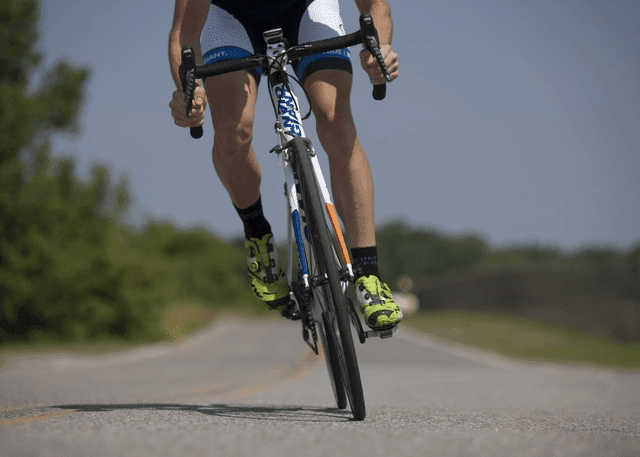We’ve been singing the praises of cycling for some time now here at Aspiring Gentleman. It’s a great way to keep fit, you’ll have a lot of fun, and it’s great for the environment. We would recommend it to anyone – and do, on a regular basis. But one f the major stumbling blocks for people new to cycling is their concern about safety.
It’s no surprise. Everyone hears about the many accidents involving cyclists on the road, and there are some genuine horror stories. There is also something about sharing the same space as huge hunks of metal weighing a few tons that put people off.
But if you look beyond the scare stories, cycling can be a very safe pursuit. You just need to know how to take care of yourself – and your bike. In today’s guide, we’re going to go through everything you need to know about cycling safety. We hope it might give some of you the confidence to get out there and experience the joys of this fine, healthy activity. Let’s get down to business.
The bike
The first thing to remember is that if you want to be safe on the road, it’s worth investing a little more on a safe bicycle. The cheapest options will not be anywhere near as sturdy or reliable as the best road bikes. Plus, the more you spend, the longer your new bicycle will last. But what does your money go on, and why are safer bikes more expensive? Well, first of all, a lighter frame made from specialist metals will be easier to control, therefore safer to ride. You will enjoy more precise gear shifts, braking, and handling – all of which allow you to focus more on your journey. Finally, you will be a lot more comfortable and enjoy better suspension. Again, everything adds up to a better cycling experience and means you will suffer fewer distractions.
The gear
A cycling helmet is the absolute bare minimum you need to avoid bicycle accidents, and again, it’s worth investing in high quality. It could be the difference between a minor headache and severe brain injury. You should also consider getting yourself some proper cycling clothing. Sure, we get there is a concern that you might look ridiculous. But when you are cycling for long periods, you will appreciate the lightweight materials a lot more than heading out in a pair of raw denim jeans. Yes, we’re talking about chaffing, here, fellas – which is something you don’t want to experience in all honesty. Look at buying bright colors, too. Dark materials will make you less visible to drivers, who, it must be said, sometimes need all the visual clues they can get. Finally, don’t forget to kit out your bike. You will need lights at the front and back, as well as reflectors to give drivers, even more, warning. A bell can be handy, too, in case you come across jaywalkers or people walking through trails.
The skills
Every state has a bicycling education program, and we recommend you sign up and learn everything you can. Now, you might be super confident in the saddle. But these training courses will teach you that you just can’t afford to put your trust in other people on the road. You have the same rights as motor vehicles on the road, but the sad truth is that some drivers won’t take their responsibilities seriously. And, if you get hit, you may not be around to press any charges. The main safety guidelines of all these courses will focus on a few vital things. First of all, the safe cyclist is a visible cyclist. We have already been through the types of clothes you should wear, and there are a few other things you should do. Always ride in a position where you can be seen, from the front and behind. You should also try and make eye contact with other road users so that you know for sure they have seen you. Make sure you signal properly, too. Many accidents occur because cyclists aren’t indicating clearly or for long enough.
The awareness
When you are out on the open roads or on bike trails, you can afford to let go a little. But in heavy traffic areas such as cities, it is critical that you are aware of your surroundings at all times. Keep your distance from cars in front of you, and never undertake them. You never know when they might turn, and if you are on their inside, you will end up having an accident. It will be tempting to weave your way through slow moving traffic, but, again, this is only going to lead to dangerous incidents. The simple truth is that those gaps you see opening up can be closed off pretty quick. And if you aren’t careful, you could end up being the meat in a car sandwich.
The sociable hobby
Cycling can be a great social activity – and there is an element of safety in numbers. The more of you there are, the more likely it is that drivers will see you and act responsibly. In fact, we recommend you start your cycling hobby by going out with friends until you are truly comfortable on the road. Being overtaken by an enormous truck takes some getting used to, and inexperienced cyclists can often make mistakes. So, round up some friends of mixed abilities and head out for a few rides unto you get your bearings. There are also plenty of cycling clubs and associations you can join.
The stats
If you have no fears at all about heading out on a bike, please be aware of the stats. During 2014, 726 bicyclists were killed in auto accidents. That’s the equivalent of twelve people every day. You could also say that more than one person in your state will be killed every week. But it isn’t just death you should be worrying about. In the same year, 50,000 people suffered injuries from bike accidents, of varying severity. And the simple fact is that when your body goes up against a ton or so of fast-moving metal, there will only be one winner. So, have fun and enjoy your new hobby, by all means. But take your cycling safety seriously, or you may not enjoy much ever again.
Image Source; Image Source; Image Source; Image Source








